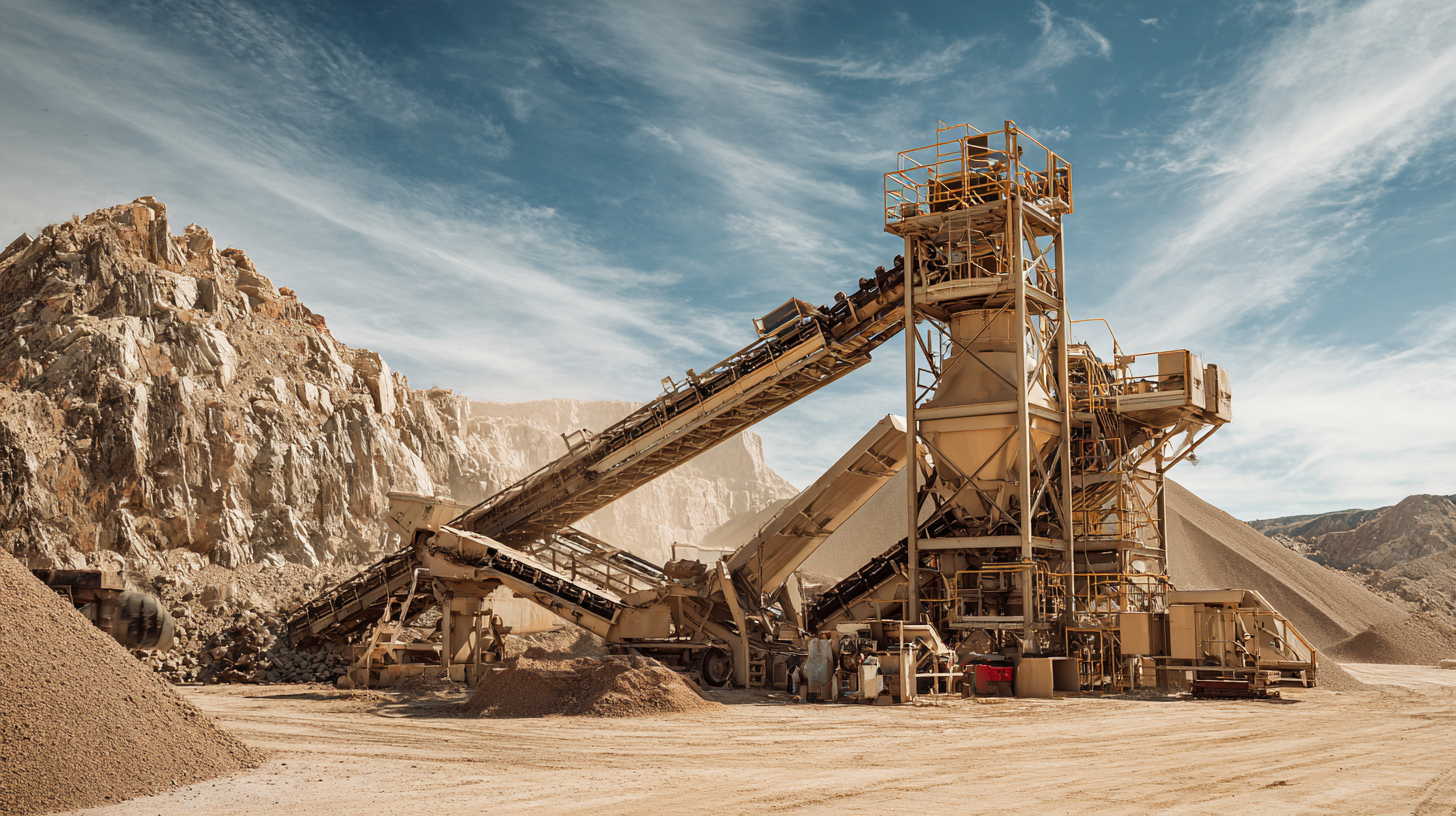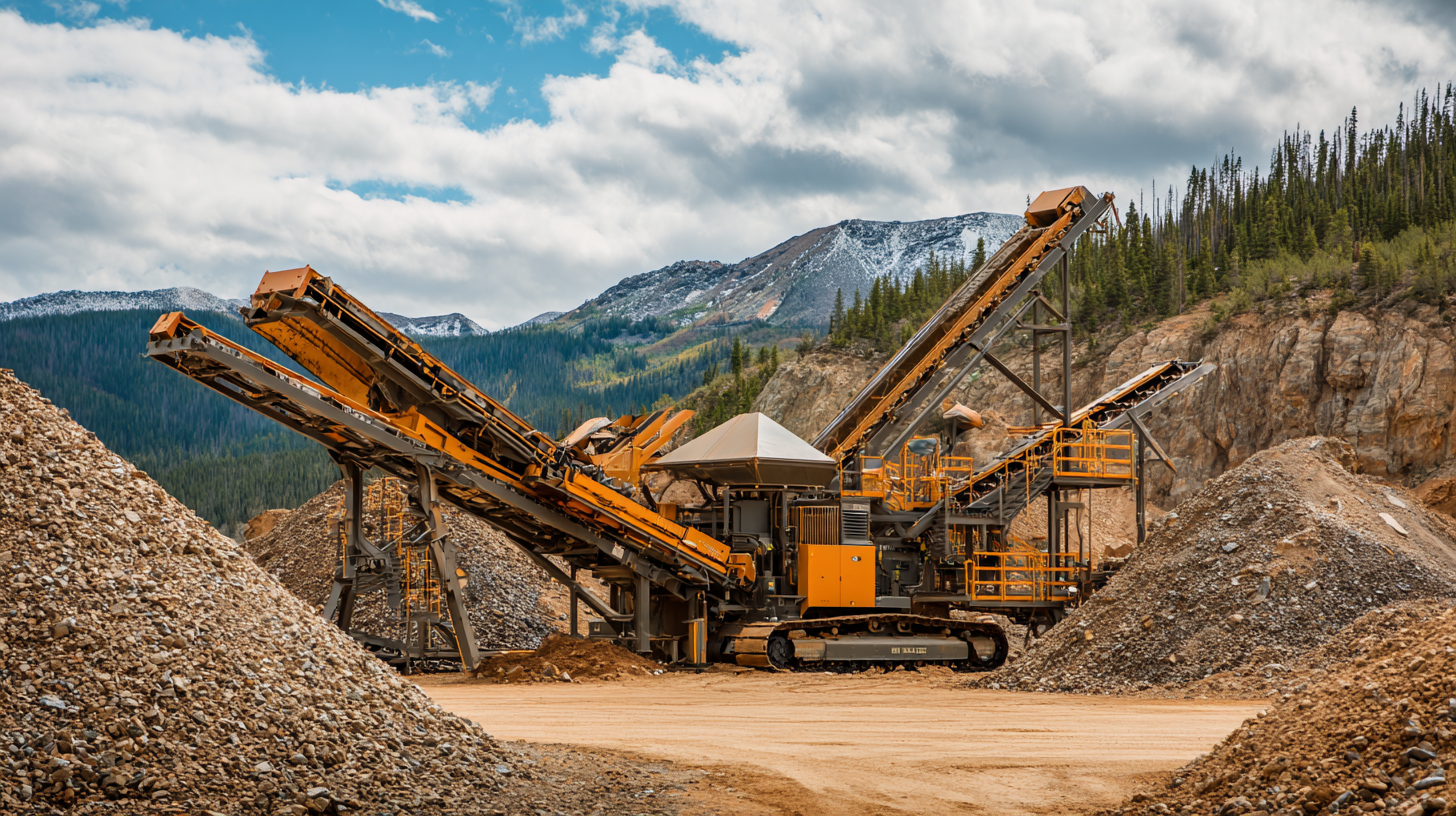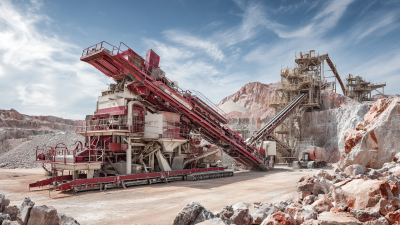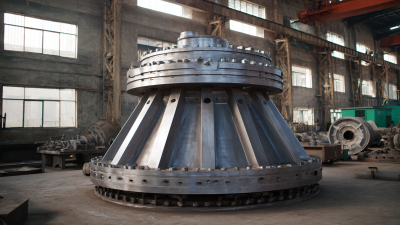
-
Home
-
About Us
-
Products
-
News
-
Blog
-
Contact Us
Leave Your Message

When selecting a cone crusher for your operation, understanding the critical factors that influence performance and efficiency is essential. According to a report by Grand View Research, the global cone crusher market size was valued at over USD 1.5 billion in 2022, and it is projected to grow at a significant rate due to the increasing demand in various industries, including mining and construction. This growth underscores the importance of making informed decisions when choosing the right equipment for your business needs.
 Cone crushers are renowned for their ability to reduce material size and create consistent, high-quality output. However, with a variety of models and configurations available, it can be challenging to pinpoint which cone crusher will best suit your specific requirements. Industry experts suggest that factors such as the material type, feed size, capacity, and desired final product should be carefully analyzed. By considering these elements, operators can optimize their investment and enhance their crushing operations, ultimately leading to improved productivity and profitability.
Cone crushers are renowned for their ability to reduce material size and create consistent, high-quality output. However, with a variety of models and configurations available, it can be challenging to pinpoint which cone crusher will best suit your specific requirements. Industry experts suggest that factors such as the material type, feed size, capacity, and desired final product should be carefully analyzed. By considering these elements, operators can optimize their investment and enhance their crushing operations, ultimately leading to improved productivity and profitability.
In this article, we will outline ten essential tips for selecting the ideal cone crusher tailored to your needs, ensuring you make a choice that aligns with both your operational objectives and budget constraints.
When selecting the right cone crusher, understanding the material type and the specific application requirements is crucial. Different materials exhibit distinct characteristics, such as hardness, abrasiveness, and moisture content, which can significantly influence the performance of the crusher. For instance, softer materials like limestone may not require the same robust features as harder materials like granite. Therefore, assessing the material to be crushed is the first step in making an informed choice.
Application specifications also play a vital role in the selection process. Factors such as the desired output size, throughput capacity, and operational environment must be considered. It's essential to evaluate whether the cone crusher will be used for secondary or tertiary crushing, as this affects the design and features needed to achieve optimal performance. Additionally, understanding the maintenance requirements and operational costs can help ensure that the chosen model meets both performance expectations and budget constraints. By focusing on these key factors, operators can select a cone crusher that aligns perfectly with their needs, enhancing productivity and efficiency.
When selecting a cone crusher, understanding its throughput capacity and how it correlates with your production requirements is crucial. Cone crushers are typically used in various applications, from mining to construction aggregates, and their performance can significantly impact operational efficiency. For instance, a study from the International Journal of Mineral Processing indicates that optimizing the crusher's feed size and material characteristics can increase throughput by up to 30%. This highlights the need to closely match crusher capabilities with the type of material processed.
Another critical factor is the relationship between the crusher's capacity and the desired product size. According to data from the Mining Equipment Manufacturers Association (MEMA), a cone crusher can typically achieve a throughput of 50 to 2,000 tons per hour depending on its size and operational parameters. It's essential to consider not only the maximum capacity but also the operational conditions and how they affect performance. For example, maintaining a consistent feed rate can help prevent bottlenecks and ensure that the crusher operates efficiently at optimal capacity, leading to a more productive operation overall.

When selecting the right cone crusher for your operations, understanding the reduction ratio is crucial. The reduction ratio refers to the ratio of the size of the feed material to the size of the crushed product. A higher reduction ratio means that the crusher can produce smaller, more uniform product sizes, which is essential for downstream processes. Assessing your project's material specifications and the desired end product size is key to determining the appropriate reduction ratio for your needs.
Here are some essential tips to keep in mind when choosing a cone crusher. First, consider the type of material you will be processing. Different materials may require specific configurations of the cone crusher to achieve optimal performance. Second, evaluate the capacity and throughput requirements. Knowing the desired tonnage will guide you in selecting a crusher that can handle your operational demands without overworking the equipment. Finally, don’t overlook the importance of the crusher's design and features, such as automation capabilities. These can greatly enhance operational efficiency and reduce downtime.
By thoroughly assessing the importance of the reduction ratio alongside these other factors, you can make a well-informed decision and select the cone crusher that best fits your operational goals.
When selecting the right cone crusher, evaluating maintenance requirements is crucial for understanding the long-term cost implications of different designs. Regular maintenance plays a significant role in preventing costly repairs and ensuring optimal performance. Some models are designed with accessible components, which facilitate easier maintenance routines, reducing downtime and operational costs. Investing in a cone crusher that offers straightforward maintenance features can lead to substantial savings over the machine's lifespan.
One key tip in your selection process is to consider the availability of replacement parts. Ensure that the chosen model has readily available components that won’t lead to excessive lead times when repairs are needed. Additionally, look for designs that minimize wear and tear, as these can significantly impact maintenance frequency and costs. It’s also beneficial to choose a design with proven reliability to ensure that it can withstand high-stress conditions without frequent breakdowns.
Lastly, consider the manufacturer’s support and service offerings. A reputable manufacturer will provide excellent after-sale service and maintenance guidance, which can help manage long-term costs effectively. Select a cone crusher backed by a strong support network, ensuring you have the assistance you need when problems arise. By evaluating these factors, you can make a more informed decision that aligns with your operational needs and budget.

When selecting a cone crusher in 2025, safety features should be a top priority for operators. Recent industry reports indicate that newer models prioritize automated systems, which significantly reduce human error and enhance operational safety. Features such as automatic shut-off systems, electronic monitoring, and advanced obstacle detection play a crucial role in preventing accidents. According to a 2023 equipment safety report by the National Stone, Sand & Gravel Association, sites that implemented modern safety technologies saw a 30% reduction in workplace incidents.
Moreover, technological advancements have revolutionized cone crusher performance and efficiency. The integration of IoT (Internet of Things) technology has enabled real-time data collection and analysis, allowing for predictive maintenance and the optimization of operational parameters. A study conducted by Equipment Analytics Group in 2022 revealed that crushers equipped with such technologies demonstrated a 15% increase in energy efficiency and a 20% reduction in operational downtime. As these advancements continue to evolve, ensuring that new cone crusher models incorporate robust safety measures alongside cutting-edge technologies will be vital for maximizing productivity and protecting workforce safety.





